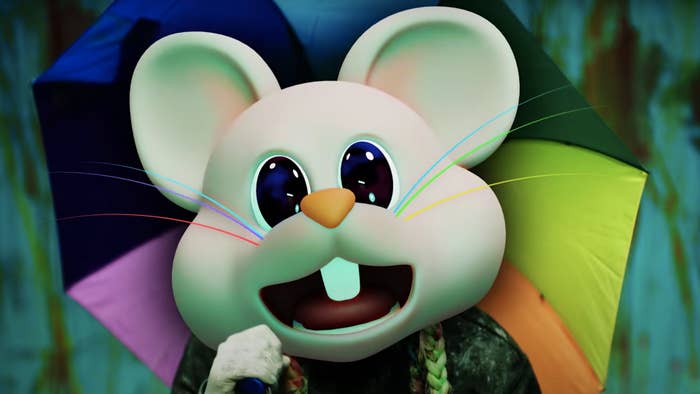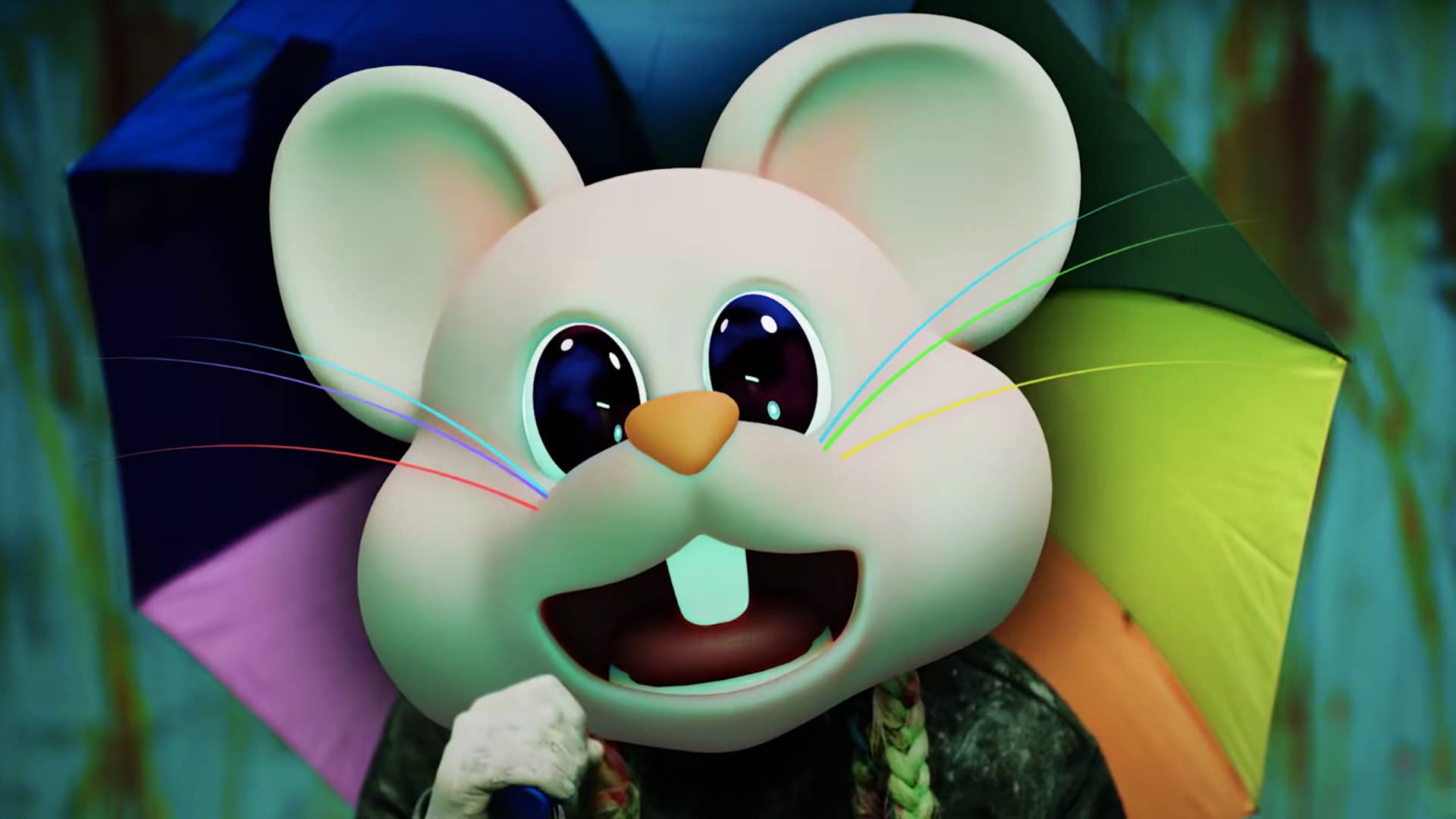
Before Tekashi 6ix9ine was the world’s most famous cooperating witness, and before he was a controversial rapper, he was a cameraman.
Dave East remembered running into a pre-fame, tattoo-less Daniel Hernandez.
“He was in the studio. He didn’t have no tattoos, he didn’t have no colorful hair. He was a cameraman. He used to do videos,” East told an interviewer in 2019. “Tekashi was a cameraman. That’s a fact.”
And during his rise to fame, 6ix9ine gave indications that he cared far more about his videos than just about anything—including the music they were meant to promote.
“The songs is trash, but the videos is out of sight,” rapper Seqo Billy remembers 6ix9ine saying on their first meeting in May, 2017. Even after he became a star, 6ix9ine was still very hands-on with his visual aesthetic, editing all of his videos himself. When he was kidnapped in July 2018, it wasn’t because he was on his way to a night of partying; he was frantically driving to his best friend’s house in order to add titles to the “Fefe” video.
So it only makes sense that 6ix9ine’s big post-prison comeback is centered around visuals. Whether he’s working on music videos or Instagram posts, he’s still obsessed with his visual identity.
Just days after being released from prison, 6ix9ine posted an illustration created by artist Alex Solis, who has done much of the rapper’s artwork. It featured 6ix9ine reclining on top of a rat trap, contentedly eating a piece of cheese.
“The idea is that everyone’s calling him a rat or whatever,” Solis told Complex at the time. “Everyone was trying to trap him. But in reality, he’s ended up getting the cheese. People think it’s a diss, but it really isn’t. It’s him taking this and embracing these people calling him names. He’s the one that’s going to end up eating the cheese without being trapped.”
Everyone is calling 6ix9ine a rat, of course, because of his status as a cooperating witness, and in particular because of his three days of very public testimony in the trial of two of his former affiliates in the Nine Trey Gangsta Bloods street gang. This was met with major backlash in the hip-hop community, but 6ix9ine is not running from the accusation. Instead, he’s leaning into it—pulling an 8 Mile-esque move of saying negative things about himself before his opponents can. And he’s doing it the best way he knows how: with images.
It’s imagery, far more than music, that got 6ix9ine attention in the first place. What everyone remembers most about “Gummo” isn’t the song itself. It’s the incongruity of a young man with colorful hair and a green Mexico soccer jersey surrounded by red bandanna-wearing Nine Trey Bloods. It was an unforgettable combination, one that launched 6ix9ine to near-instant stardom.
When it came time for 6ix9ine to release his comeback video for “Gooba,” he went for similarly eye-catching visuals. No gangs this time, of course. Instead, he leaned into the idea that people were mad at his cooperation. Not only did he commission Solis to create an illustration for Instagram of a cartoon 6ix9ine pointing out something to a policeman and an FBI agent, he also added a section to “Gooba” video where his face was replaced by a giant rat emoji.
The video’s visual effects creative director, Zane Comer of the performance branding company Within, says his team came up with the idea for that now-infamous moment. But, Comer explains, the final shape of that idea was guided by 6ix9ine.
“Working with 6ix9ine was interesting because he and the team really understand their audience and what will resonate with them,” Comer said when Complex spoke to him days after the clip dropped.
At first, Comer points out, the rat’s appearance was closer to 6ix9ine’s actual face, with tattoos and rainbow hair that mirrored the rapper’s. But 6ix9ine had a different idea.
“He made the call, like, ‘Yo, this is going to travel way further if we make it closer to the emoji,’” Comer remembered. “And as you've seen in all the reaction videos, the use of the rat emoji is slowly becoming iconic.”
Solis and 6ix9ine communicated directly about the Instagram posts, and about the opening of the “Gooba” video, which features an animated shark with rainbow teeth. (Solis did the animation in the latter in tandem with his friend Nacho Diaz.) The artist remembers 6ix9ine being all business in their conversations, and providing notes in response to Solis’ initial ideas.
The shark, designed by Solis (“My only direction was ‘Vicious Tekashi shark, front view,’” he texted), appears all over 6ix9ine’s return. His Solis-created IG avatar features an animated 6ix9ine with rainbow shark teeth. The shark is also heavily incorporated on the rapper’s new merch. And one of the first things he showed off during his return to social media was his new blinged-out shark chain.
This focus on the visual, and the attention to detail, was apparent to everyone who worked on “Gooba.”
Bryan Smaller of Company 3, who did color correction on the video, recalls getting a new cut of the video after he had color-corrected it, just hours before it was supposed to go live. “It's not a subtle adjustment here and there, and new shots,” he tells Complex. “It's radically different.”
Smaller, who was supposed to work on 6ix9ine’s never-completed video for “Mama” (the video shoot was interrupted by gunfire), says that, while he only directly dealt with co-director David Wept, he was very clear on the fact that 6ix9ine was looking at every detail.
“He had direct oversight on the entire creative process,” Smaller continued.
The key concept? It should look like a kids’ show.
“David said, ‘Here’s what we're thinking. We want to have, like, a Nickelodeon look. And we think the video is going to be really awesome if we have this Nickelodeon aesthetic, but pairing it with these aggressive lyrics and this aggressive performance,’” Smaller summarized.
Making the video look like childrens’ programming was likely a deliberate move, bound to appeal to 6ix9ine’s mostly young, Gen Z-heavy audience. And judging by the clip’s massive numbers, Tekashi and his team were dead-on in their assessment.
It makes sense. If there’s one thing that 6ix9ine has proven over and over again, it’s that he is a master at getting attention.
“He knows what he’s doing,” Solis said of his frequent collaborator. “It’s not just a kid that's getting famous by luck. He knows how to work social media.”


